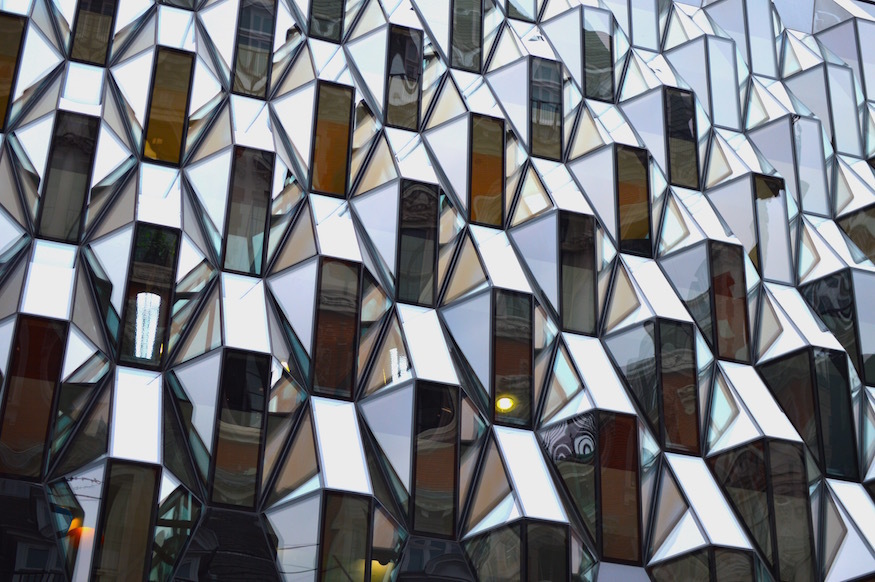
Few roads divide Londoners like Oxford Street. To some, it's a shopping heaven; to others, it's a log-jammed chasm of vexation, better left to tourists.
As we duck and dive, and dodge the human tide, we often forget to look up at the buildings lining the famous road. More than most thoroughfares, Oxford Street offers a real hotchpotch of architectural styles, from elegant Edwardian facades, to tired-looking 60s blocks, to modern confections of glass and steel.
The latter is best represented by the superb feature shown in the image above. Looking like some kind of insect hatchery, the Future Systems design at 187-195 adds a real breath of life to the once-jaded part of Oxford Street.
Turn 180 degrees and the contrast couldn't be greater. Here you'll see this treasure box of a building:

This is the former Waring and Gillow furniture showroom, particularly noted for supplying theatres and cinemas with seating. Its richly decorated facade looms over the east end of Oxford Street, like a displaced wing of Hampton Court Palace (as architectural historian Nikolaus Pevsner observed). Today it's home to H&M and Uniqlo. Look out to the east for the statue of Darcey Bussell, over the entrance to the old Plaza building.
Nearby stands the distinctive (but largely unnoticed) Ilford House:

The address is today home to a branch of Virgin Media and a language school. It's had many uses over the years, from a photographic gallery to a car show room, to the home of a quack doctor offering breast enhancement during the first world war. Had you turned up in 1963, you could have seen an exhibition of puppets from the Gerry & Sylvia Anderson show Fireball XL5.
Over to the western side of Oxford Street stands the Grade II-listed building at number 313, a riot of statues, balustrades and other architectural flourishes:

The two niche statues once supported lamps, but we can find little else about this memorable structure.

Opposite, we find the more familiar facade of John Lewis, a 1950s replacement for the original department store, which was catastrophically damaged in the second world war. The store includes a Grade II* listed aluminium and steel sculpture by Barbara Hepworth, known as Winged Figure. We've always seen it as a giant animal trap — a way of dragon-proofing the western side of the store.
Debenhams, too, has a highly distinctive facade — a kinetic facade, no less. Its sides are dressed with 187,391 aluminium panels, which shimmer in the wind like defective chain mail.

The scaly surface was installed in 2013, transforming one of the ugliest buildings on Oxford Street into something of a spectacle.
Selfridges is arguably the king of the Oxford Street department stores. It is a genuine landmark, visually iconic, architecturally ionic and — thanks to a now unaffordable 'bargain basement' — richly ironic. The store is fronted by a particularly attractive katamari of sculpture, shown below.

And finally, at the very western end of Oxford Street stands the Amba Hotel (formerly the Thistle). Its sharply curved brown facade reminds us of a many-layered chocolate cake.

Every article should end with a many-layered chocolate cake.




